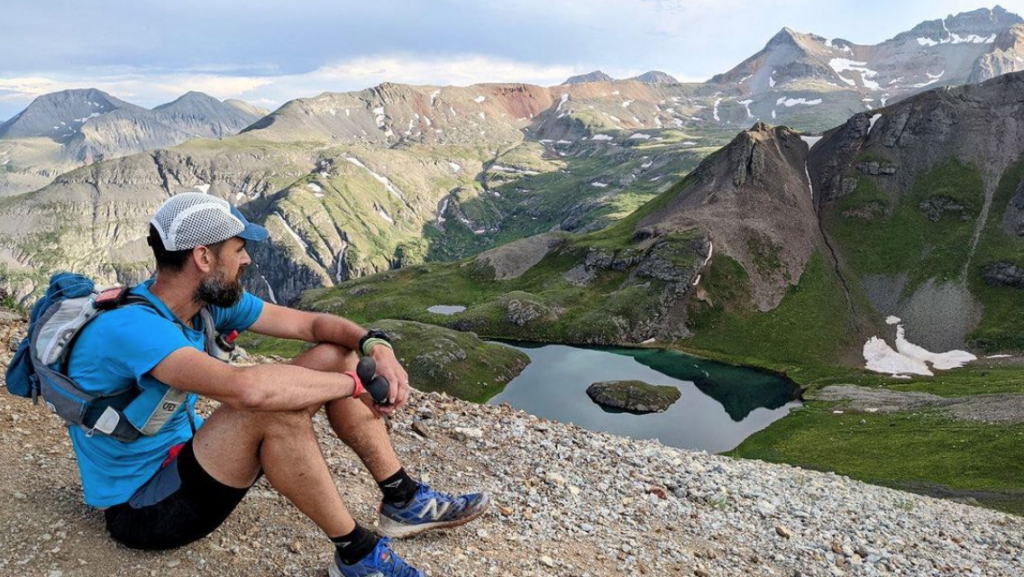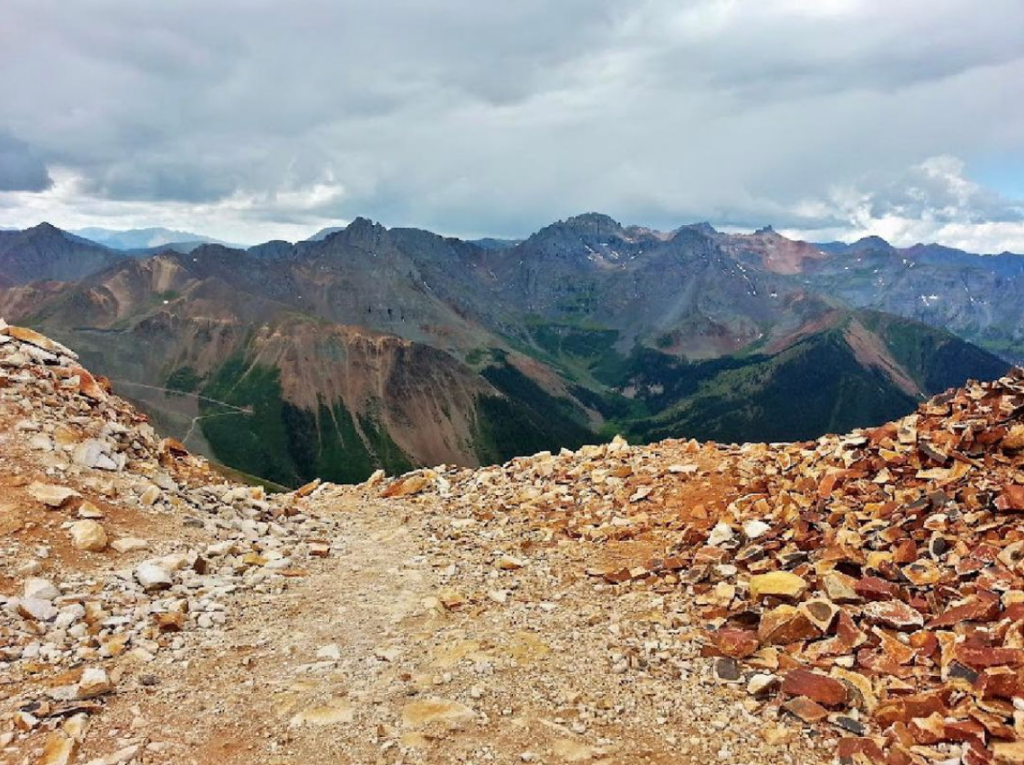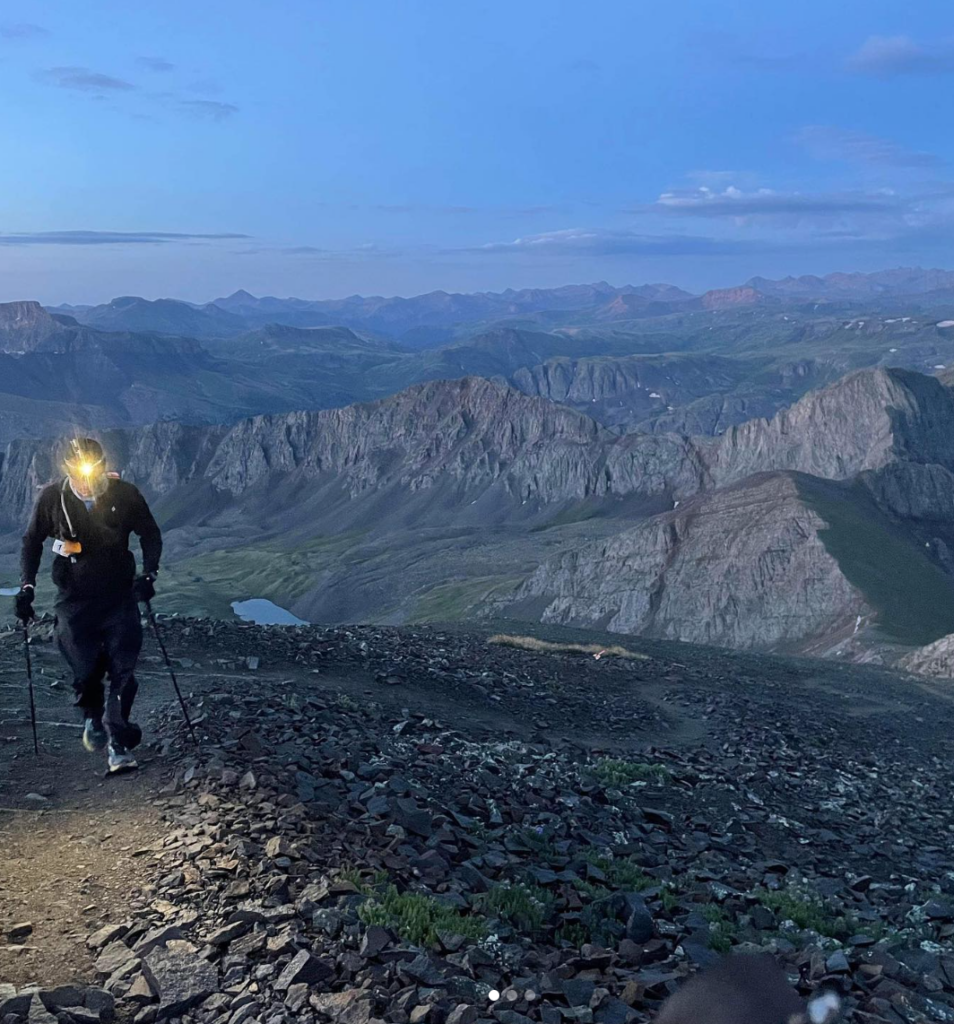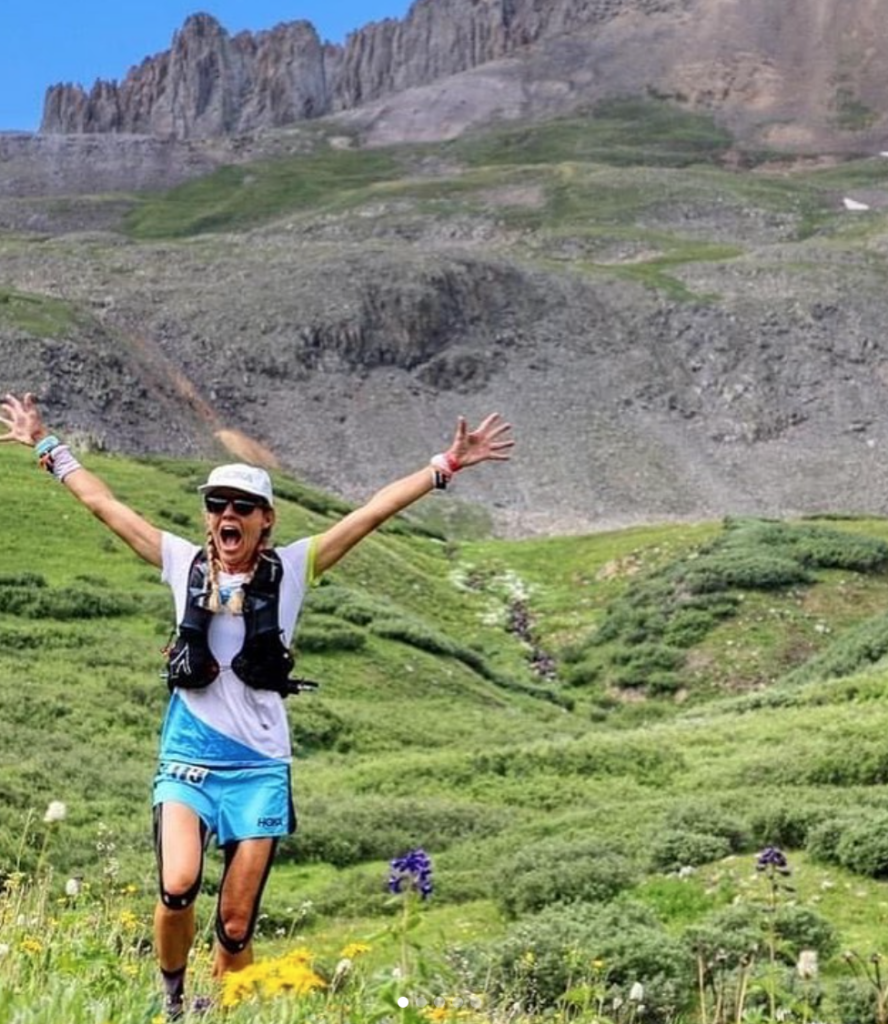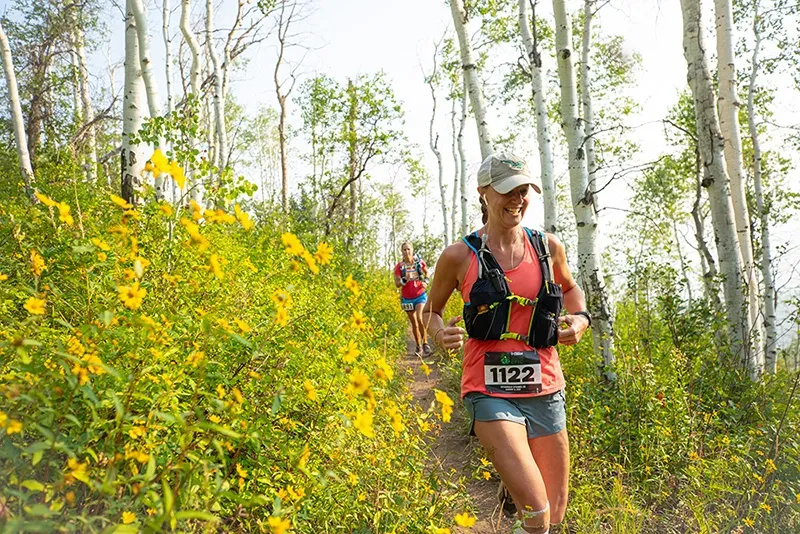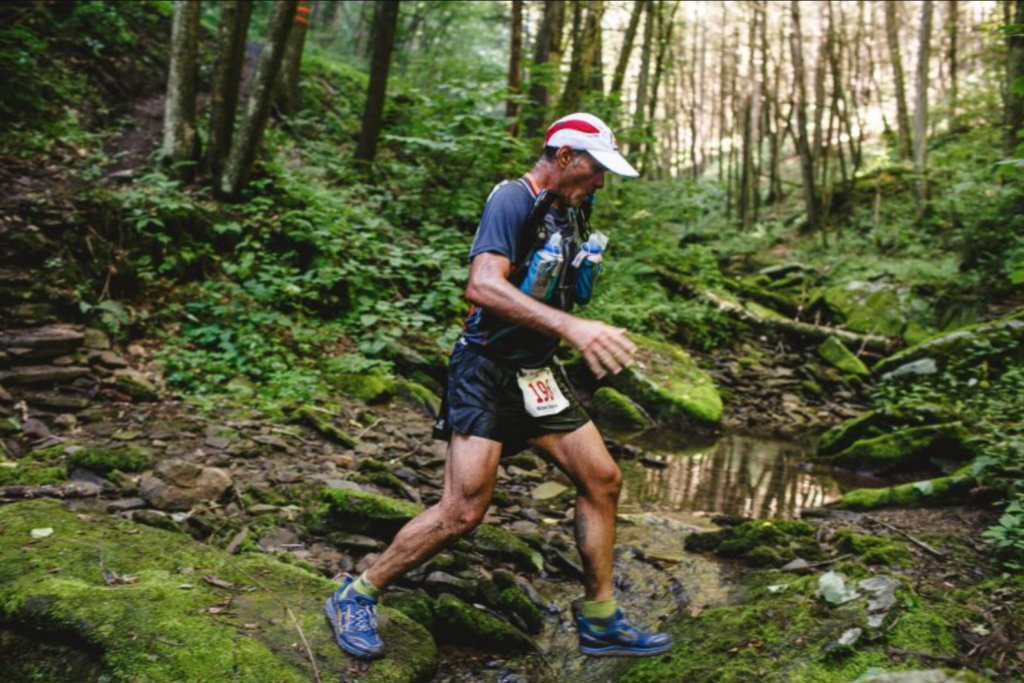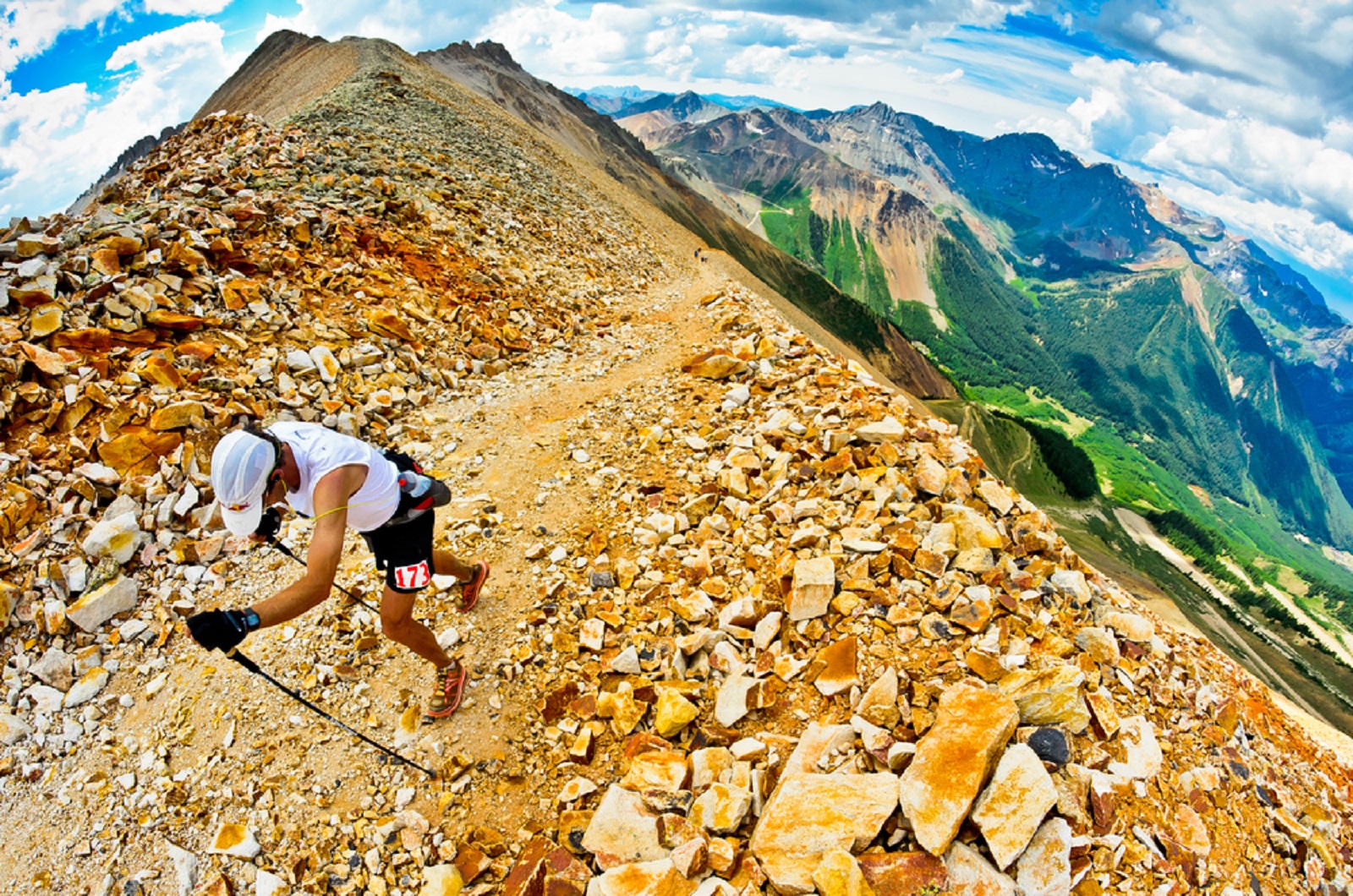
Updated June 13, 2024
The Hardrock 100 Endurance Run is an ultramarathon of 102.5 miles, plus 33,197 feet of climb and 33,197 feet of descent for a total elevation change of 66,394 feet, at an average elevation of over 11,000 feet. This course offers a graduate-level challenge for endurance runs and is considered one of the Best Trail Running Events in the Rockies. The course is designed to provide extreme altitude, steepness, and remoteness challenges. Mountaineering, wilderness survival, and navigation skills are as important in this event as your endurance.
The Hardrock 100 Endurance Run is the centerpiece of the Rocky Mountain Slam Series, which a runner completes if s/he finishes Hardrock plus three of four other races in the Rocky Mountains: Leadville Trail 100, the Bear 100 Mile Endurance Run, the Bighorn 100, or the Wasatch Front 100 Mile Endurance Run. The award is presented at and hosted by the Bear 100 Mile Endurance Run, as this is the final run in the series. The Hardrock is also a Wester States 100 Qualifier event.
The run is on a complex loop course on 4WD roads, dirt trails, and cross country in Southern Colorado's San Juan Range, USA. In 2023, the run will be in the counter-clockwise direction and a full course description is available. The run starts and ends in Silverton, Colorado, and travels through Telluride, Ouray, and the ghost town of Sherman, crossing thirteen major passes in the 12,000' to 13,000' range. Entrants must travel above 12,000 feet (3,700 m) of elevation 13 times, with the highest point on the course being the 14,048 summit of Handies Peak. To complete the event, instead of crossing a finish line, runners must "kiss the Hardrock," a picture of a ram's head painted on a large block of stone mining debris.
The cut-off time for finishing the run is 48 hours. The current fastest performances are held by Francois D'Haene (21:45), set in 2021, and Diana Finkel (27:18), established in 2009. The average time required to finish this run is 39:52:17, which is longer than the cutoff times of most 100-mile (160 km) races. This is mainly due to the high elevations, which can cause altitude sickness or edema in some runners. In addition, the course covers highly rugged terrain, including steep scree climbs and descents, snow packs, river crossings, and boulder fields. The run starts at 6 am, so runners who finish in over 40 hours see the sunset twice before spending. Runners continue at night using flashlights or headlamps. Portions of the trail are adjacent to steep dropoffs and are described in the course description with the word "exposure." Check out the official Runners Manual for the 2023 event for all the details.
Recognized as the hub of the high country, Silverton offers a range of locally owned and operated lodging establishments. Whether you prefer the cozy charm of bed and breakfasts overlooking the majestic San Juan Mountains or the rugged allure of camping, numerous options suit your preferences and budget. Participants can also find options near Ouray. However, in 2022, "Camping Hardrock" was introduced as a community-oriented camping option at the Kendall Mountain Recreation Area in Silverton. This free camping opportunity for vehicles and tents but does require pre-registration.
Outside of the event, there are endless opportunities to get into nature. Hikers will enjoy destinations like Ice Lakes Basin, Highland Mary Lakes, and the challenging but rewarding Handies Peak. These trails offer breathtaking views of alpine meadows, sparkling lakes, and rugged peaks, making them a favorite. Also, The Animas River, which flows through Silverton, is renowned for its exhilarating whitewater rafting opportunities and is a haven for fly-fishing enthusiasts. Finally, mountain bikers and road cyclists will enjoy the extensive network of trails and cycling routes around the area. The Hermosa Creek Trail and the infamous Alpine Loop are two mountain bike options that offer breathtaking scenery, technical challenges, and an adrenaline-fueled adventure. Notable road biking routes include the Million Dollar Highway (US Route 550) that connects Silverton to Ouray, offering stunning views of cliffs and towering peaks.



